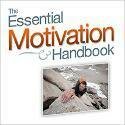Meditation Tips - 10 Easy Tips For Meditation To Make Your Life Easier, Happier & More Blissful!
What is the need of meditation tips? Meditation involves working with the mind and understanding it. It might lead to discomfort and frustration initially as we are not accustomed to meditation. Separately, you can also read useful summaries at https://buy-essays-now.com/ because meditation requires deep training and control, which is very difficult to have from the beginning.Meditation instructions and tips help to overcome these hurdles and make the journey of meditation as smooth and fruitful as possible.
10 Easy Meditation Tips
Meditation instructions can be very beneficial to make the most of the time spent for meditation and gain the maximum benefits of meditation techniques we practice.Here are 10 easy meditation tips that are highly beneficial for beginners and advanced meditators alike -
1) Place for meditation. It is helpful to meditate daily at a special place that is especially meant for meditation. Putting a picture of your guru, deity or idol and surrounding the meditation room with inspirational and sacred objects is quite beneficial in creating a positive vibration and the right environment for meditation.
2) Be mindful during the day. Even when you're not in an active meditation session, try to remain mindful and aware of your thoughts and routine actions at other times during the day. This shall help to sharpen your awareness and take your meditation to deeper levels. This is one of the meditation tips that can provide a quantum leap to your awareness levels.
3) Posture for meditation. Sitting in a cross-legged posture is how traditionally meditation is practiced. But, this might cause some numbness and pain in your feet and joints and can be distracting. You should sit in a meditation posture that does not lead to pain and aches in a short duration of practice.
One of the other very helpful meditation tips is to stretch after a reasonable duration of meditation and then re-enter the seated posture of meditation. In fact, this is how the yoga postures were conceived and came into existence.
4) Using cushions for meditation. A comfortable and erect posture of meditation is essential to meditate free of all physical distractions and reap the full benefits of meditation. You can make use of special seats or cushions to sit comfortably in the right posture and be free of pains and aches that might occur during meditation due to sitting in the wrong posture.
5) Avoid chasing results. The benefits of meditation can be felt and experienced right from the very first session. It does not require the practitioner to be very focused and free of all thoughts for the gains to be felt.
The practice of meditation itself is enough; its success lies in the practice itself. You will find that you are being less disturbed by incessant thoughts, negative emotions, anxiety, etc. after you start meditating. So, avoid being result-oriented.
6) Environment for meditation. Although advanced meditators can be in a meditative state any time and anywhere, for beginners it is advisable to meditate in the quietest environment possible which is free from any type of distractions.
7) How much meditation? A meditation session of 20-30 minutes is sufficient initially. You can add more sessions later in the day rather than trying to overdo or elongate one session of meditation.
Find out your comfort level and meditate for that long only in each session. With practice and passage of time, meditation becomes natural. Then the length of practice can be gradually increased without going through any strain. Meditating at a specific time every day is also very beneficial.
8) To lie down or not? Meditating in the "lying down" posture has its own advantages and disadvantages. The threat of falling asleep is present throughout the time we meditate while lying down. While it may be beneficial for those suffering from insomnia, for others it might turn a meditation session into a "sleep session".
While it is important that you feel comfortable while you meditate, be careful that you are not so comfortable that you fall asleep!
9) Using Timer in meditation. Meditation takes us to a state of timelessness and formlessness. Losing track of time is quite common in meditation. In order to keep track of the duration of meditation, it is helpful to set a timer and be free of the worry of how long to meditate. But make sure that the timer has a gentle sound, and not a very loud and an unpleasant tone.
Looking at the clock or watch to keep track of the time during meditation can be quite distracting for many people.
10) Being here and now. It is important to keep the right mindset while meditating and not being goal oriented. Meditation is not about achieving Nirvana or enlightenment, neither is it about being anything or getting anywhere. In fact, it is not an act of quieting the mind, but paying attention and listening to it.
Meditation is not an attempt to improve your personality. You are perfect as you are. Meditation is the art of being in the present and accepting yourself totally right here and right now.
Additional Resources
Relaxation and meditation are highly compatible. If you are looking for other relaxation techniques such as aromatherapy, breathing techniques, Emotional Freedom Technique (EFT) and yoga, visit Relaxation at Home.

